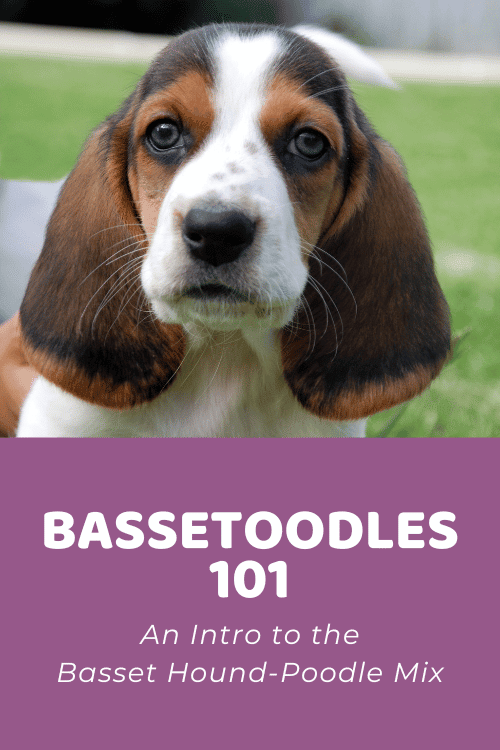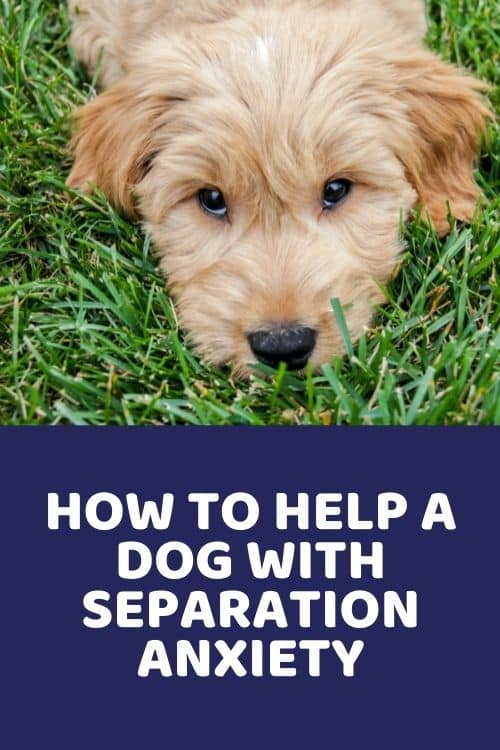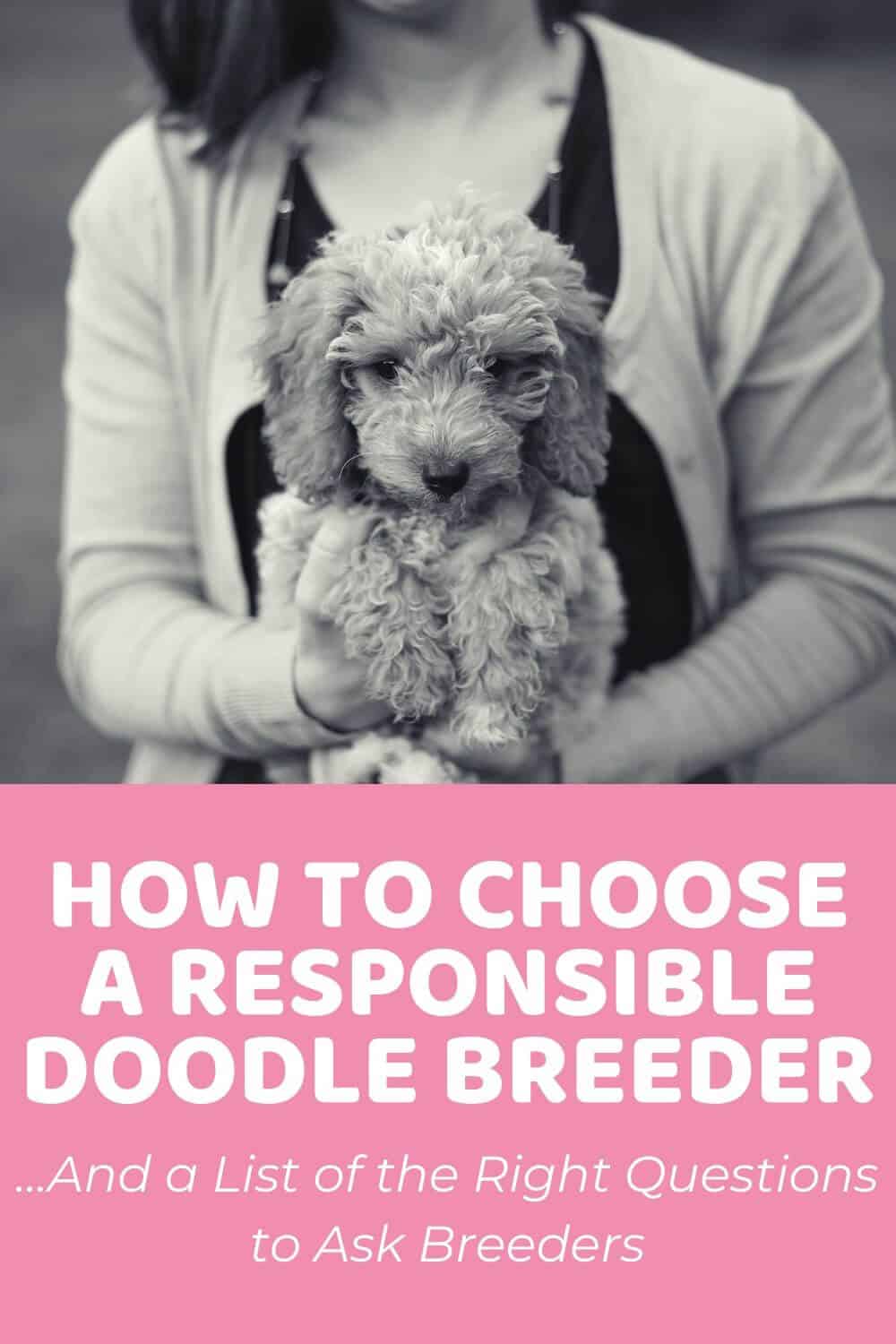The Bassetoodle is another up and coming Poodle mix that we expect to become more popular in the upcoming years. If you’re interested in learning more about the Bassetoodle, then keep on reading. In this guide, we learn everything about the Bassetoodle, including their appearance, activity levels, temperament, health, grooming, and much more. Let’s get into it!
Learn How to Care for Your Doodle Puppy!

Perfect for first-time Doodle parents, get ALL your questions answered, including questions new Doodle parents don’t even think to ask.
Plus, get $700 worth of Bonus Materials for FREE, including:- Doodle Parenthood Community and Support Group ($190 value)
- Doodle Puppy Growth Tracker ($20 value)
- EMERGENCY Cheatsheet: When To Call The Vet Immediately ($50 value)
- HELP! Button ($145 value)
- And SO MUCH MORE!
What Is A Bassetoodle?
The Bassetoodle, also known as the Bastoodle, Basset Poo, and Bassetdoodle, is a hybrid cross between the Basset Hound and Poodle. Both Basset Hounds and Poodles are among the most well-known dog breeds out there. The Basset Hound is instantly recognized by its long body and short, stubby legs. Meanwhile, you’ll immediately spot a Poodle by its gorgeous curly coat with its intricate hairdos.
By combining these two purebred dogs, it results in an easygoing and loving Doodle with a great personality. From the Basset Hound parent, Bassetoodles inherit their friendly and gentle demeanor, whereas the Poodle heritage contributes to their high levels of intelligence and, of course, the hypoallergenic coat.
Although the Basset Hound may seem small, they’re actually quite chunky dogs that fit the medium to large-sized dog breed category. In terms of the Bassetoodle size, they can be created by using either Standard, Miniature, or Toy Poodles. However, the most popular choice for this Doodle is the Miniature Poodle.
It’s thought that the Basset-Poodle mix was first created sometime in the early 2000s. Today, they’re not as well-known as some other Poodle mixes. However, as Doodle breeds keep on trending, we expect to see more of the Bassetoodle in the near future.
Bassetoodle Physical Appearance
Color
Bassetoodle puppies can inherit a variety of coat colors that originate from their purebred Basset Hound and Poodle parents. Most commonly, Bassetoodles come in brown, tan, golden, black, white, cream, red, and blue coats. Additionally, they may also inherit beautiful patterned coats, such as the gorgeous bi-color and tri-color coats, the latter being one of the most recognizable Basset Hound coat colors.
Coat, Shedding, & Hypoallergenic Level
Obviously, one of the main appeals of Doodle mixes, including the Bassetoodle, is that these crossbreed dogs are considered low-shedding, even hypoallergenic, thanks to the Poodle genes. However, this doesn’t mean that all Bassetoodle puppies are non-shedding dogs.
As we combine two very different purebred dogs, it’s tricky trying to predict the outcome. Some puppies may take more after the Basset Hound parent, whereas others resemble more of the Poodle. And, some puppies will inherit their traits from both sides of the lineage. It all boils down to their genetics.
Similarly, the Bassetoodle can come in three different coat types. Some pups inherit the curly Poodle-like coat that’s praised for its low-shedding qualities. On the other hand, some Bassetoodles inherit the straight Basset Hound coat that tends to shed, and others get a wavy combination coat inspired by both of the purebred parents.
For people who struggle with dog allergies, a curly-coated Bassetoodle would be the safest choice. However, the Poodle genes usually work their magic even in straight coat Bassetoodles. Although straight-coated Bassetoodles are not an ideal choice for allergies, they still shed much less compared to the purebred Basset Hound parent.
Bassetoodle Size
As we’ve already established, genetics play a key role in predicting how crossbreed puppies might turn out. So, the best way to predict the size of a Bassetoodle puppy is by looking at its parents.
Surprisingly enough, the Basset Hound is a medium to large-sized breed with an average weight of 40 to 65 pounds. But thanks to their short legs, these pups only grow up to 15 inches tall.
For the Basset-Poodle mix, breeders usually prefer Miniature Poodles – they’re considerably smaller than Standard Poodles, but not as tiny as Toy Poodles. Based on weight, the Standard Poodle would be the perfect size to pair the Basset Hound with. However, as Miniature Poodles and Basset Hounds are closer in height, the Mini Poodle is a more popular choice.
Miniature Poodles weigh between 10 and 20 pounds with an average height of 10 to 15 inches measured from the shoulder. In contrast, Standard Poodles weigh around 38 to 70 pounds with an average height of 24 to 27 inches. Quite tall compared to the Basset Hound!
So, how big will a Bassetoodle get? Although the Bassetoodle is not as established as some other Doodle breeds, we can make some pretty accurate guesstimates of their height and weight.
When the Miniature Poodle is used in the mix, Bassetoodles usually weigh between 20 and 30 pounds, and they stand between 12 and 16 inches tall at the shoulder. However, if either Toy or Standard Poodles are used to create Bassetoodles, we can expect there to be much more variation in terms of size.
Just like the Basset Hound parent, Bassetoodles tend to come with shorter legs and longer bodies. But, thanks to the Poodle genes in the mix, it will be slightly more balanced out compared to the purebred Basset Hound.
Bassetoodle Variations & Generations
As if things weren’t complicated enough, there’s also the matter of Bassetoodle generations. To create hybrid breeds like the Basset-Poodle mix, breeders can use either a purebred Basset Hound and Poodle parent, or produce later generations, such as the first-generation backcross Bassetoodle, or even second-generation Doodle.
Sounds confusing, right? Here’s a quick overview of all the possible Bassetoodle generations and what each of them represents:
| 1st Parent | 2nd Parent | % Basset Hound* | % Poodle* | |
| F1 Bassetoodle (first-generation) | Basset Hound | Poodle | 50% | 50% |
| F1B Bassetoodle (first-generation backcross) | F1 Bassetoodle | Poodle | 25% | 75% |
| F1BB Bassetoodle (first-generation backcross backcross) | F1B Bassetoodle | Poodle | 12.5% | 87.5% |
| F2 Bassetoodle (second-generation) | F1 Bassetoodle | F1 Bassetoodle | 50% | 50% |
| F2B Bassetoodle (second-generation backcross) | F1 Bassetoodle | F1B Bassetoodle | 37.5% | 62.5% |
| F2B Bassetoodle (alternate cross) | F2 Bassetoodle | Poodle | 25% | 75% |
| F3 / Multigen Bassetoodle | F1B Bassetoodle or higher | F1B Bassetoodle or higher | Varies | Varies |

Simply put, generations give us a better understanding of how the puppies were bred, and even help us achieve more control over the litters, including their coat type, shedding levels, size, and personality.
As a relatively new and rare Poodle mix, the Bassetoodle is most commonly bred as first-generation. But, in the upcoming years, it’s highly likely that later generations will also become more popular.
Bassetoodle Pictures (Puppy & Adult)
Now that we’ve covered the basics, it’s time we take a look at some cute Bassetoodle pictures.
Bassetoodle Personality & Temperament
Are Bassetoodles good pets? Are Bassetoodles aggressive? Do they bark a lot? What’s their personality like? If you’re considering adopting a Bassetoodle, these are probably one of the most important questions you’ve got to find answers to.
Obviously, the Bassetoodle inherits its best personality traits from the purebred Basset Hound and Poodle parents. They’re usually very sweet-natured, friendly, and outgoing dogs. They adore their humans and love spending time with them.
On the other hand, due to their innate ability to bond so well with their families, Bassetoodles may develop separation anxiety, if left alone for long periods of time. Considering this, the Basset Poodle mix might be more suitable for people who don’t have to leave the house for long hours.
In addition to that, Bassetoodles are playful and moderately active dogs. They’re known to be quite mischievous from time to time, sometimes even showing their stubborn streak. They’re also intelligent, meaning that they’re generally easy to train. However, due to their stubbornness, you might have to practice a little bit of patience when it comes to training.
Moreover, even though Bassetoodles are as non-aggressive as they can get, they do like to express themselves once in a while. They aren’t big barkers, but they do have a tendency to howl at new and suspicious people and situations.
All in all, Bassetoodles tend to get along with anyone and everyone. Nonetheless, early socialization and training is key to raising well-rounded and well-socialized pups who know how to properly interact with other people and animals.
Bassetoodle Health & Life Expectancy
Bassetoodles are generally healthier than their purebred parents. That’s thanks to hybrid vigor, which means that they’re less likely to inherit certain health conditions that are most common in their parental breeds. In terms of life expectancy, Bassetoodles have an average lifespan of about 12 to 15 years, which is a few years more compared to the Basset parent.
But do Bassetoodles have health problems? Although usually healthy dogs, Bassetoodles are still at risk of certain health conditions that they may inherit from their Basset Hound and Poodle parents.
The most common health issues in Bassetoodles include:
- Joint problems, such as hip and elbow dysplasia, and patellar luxation
- Eye diseases like progressive retinal atrophy (PRA) and glaucoma
- Thyroid problems, including hypothyroidism
- Epilepsy
- Allergies and sensitivities
- Food intolerances
- Skin problems
- Ear infections
- Digestive issues
- Obesity
Fortunately, ethical Bassetoodle breeders carefully choose parent dogs into their breeding programs through extensive health and genetic testing. This ensures that the puppies come from healthy and strong bloodlines, and reduces the chance of them inheriting any major genetic illnesses.
Bassetoodle Exercise & Training
Being the intelligent and moderately active Doods they are, Bassetoodles require a fair amount of exercise and mental stimulation each day. Bassetoodles aren’t as active as some other Doodle breeds. However, they still enjoy their daily walkies and playtime. About one or two 30 to 60-minute walks a day would be perfect for them.
In addition to physical exertion, these pups also need to be kept entertained and occupied to prevent them from becoming bored. A simple trick for that is to stock up on interactive toys and puzzle games.
When it comes to training, the good news is that Bassetoodles have high levels of intelligence and they’re also eager to please their owners, making them very easy to train. But, as some Bassetoodles may be a bit stubborn, it may cause slight trouble for first-time dog owners.
As with any dog, these pups thrive on positive reinforcement training. Of course, starting early and being consistent with socialization, potty training and obedience training will also help a puppy to become a well-rounded and confident adult.
We also can’t underestimate the value of having professional help. For us, the Online Puppy School by Baxter & Bella is a top choice, as it covers all the lessons and steps vital for successfully raising a puppy. The great thing about this program is that it comes with a lifetime access, and you’ll receive a ton of video tutorials, classes, and educational content, which you can cover at your own pace from the comfort of your home.
Bassetoodle Coat & Grooming
If you’re considering the Bassetoodle for its low-shedding qualities, you’re probably wondering – do Bassetoodles shed? What about their grooming needs? Are Bassetoodles high maintenance?
The great thing about the Bassetoodle is that they’re usually low-shedding dogs. The not-so-great thing is that these pups require regular grooming to keep their skin and coat healthy. For some people, it may be a bit overwhelming.
Depending on your Bassetoodle’s coat type, they’ll require brushing at least 3 times a week, or even daily for curly-haired Doods that are especially prone to matting.
Depending on how fast their hair grows, Bassetoodles also need haircuts every few months. Trips to a professional groomer every other month can be rather costly. So, what many dog owners prefer to do instead is grooming their Dood at home.
Like other Doodles, the Bassetoodle is also prone to ear infections, which means that proper ear hygiene routine should be on your priority list. Remember to always clean and dry your dog’s ears after every swim and bathtime. In addition to that, trimming the ear hairs every 4 to 10 weeks is also helpful.
Naturally, Bassetoodles also need to be bathed regularly and have their nails trimmed weekly. You’ll also want to keep your pup on a consistent oral hygiene routine to prevent any dental diseases.
Where Can You Get Bassetoodle Puppies?
So, how much does a Bassetoodle cost and where can you find ethical Bassetoodle breeders? As the Basset-Poodle mix is such a new and rare hybrid breed, it might be difficult to find reputable Bassetoodle breeders. If you are lucky enough to find one, you can expect to pay at least $1500 and up to $5000 for a puppy.
It goes without saying that you should never settle for a breeder whose reputation and breeding ethics you’re unsure about. Always do your due diligence and make sure that the breeder is completely transparent with their health testing protocols, breeding procedures, and puppy rearing and training methods. Our article on How To Choose A Responsible Breeder will help you choose the best breeder for the job.
If you’re looking to adopt a Bassetoodle puppy in the US, be sure to keep an eye on our Bassetoodle Breeders Directory that we regularly update with reputable Bassetoodle breeders.
Bassetoodle 101: Frequently Asked Questions
Are Bassetoodles Good Family Dogs?
Bassetoodles make excellent family companions, as these Doods get along with everyone, including children and other pets. They’re playful and affectionate dogs that enjoy hanging out with their owners. The Bassetoodle is also relatively laid-back and gentle, making him a great pet for families with small children.
How Big Does A Bassetoodle Get?
The Bassetoodle is a small-sized hybrid breed that weighs between 20 and 30 pounds, with an average height of 12 to 16 inches measured from the shoulder. The Basset-Poodle mix usually uses the Miniature Poodle, but there’s also the possibility to use either larger Standard Poodles, or smaller Toy Poodles instead to achieve a different size of Bassetoodle.
Bassetoodle 101: Final Thoughts
Sweet, gentle, loyal, and intelligent – these are probably the best words to describe the Basset Poodle mix. The Bassetoodle might not be as well-known as some other Poodle mixes, but they sure are amazing companions for almost anyone. Thanks to their friendly nature, these pups are great with people of all ages, making them excellent family pets. If you’re looking for a dog that has all the same amazing qualities as the Basset Hound, but without the heavily shedding coat, then the Bassetoodle may just be the right pup for you.




